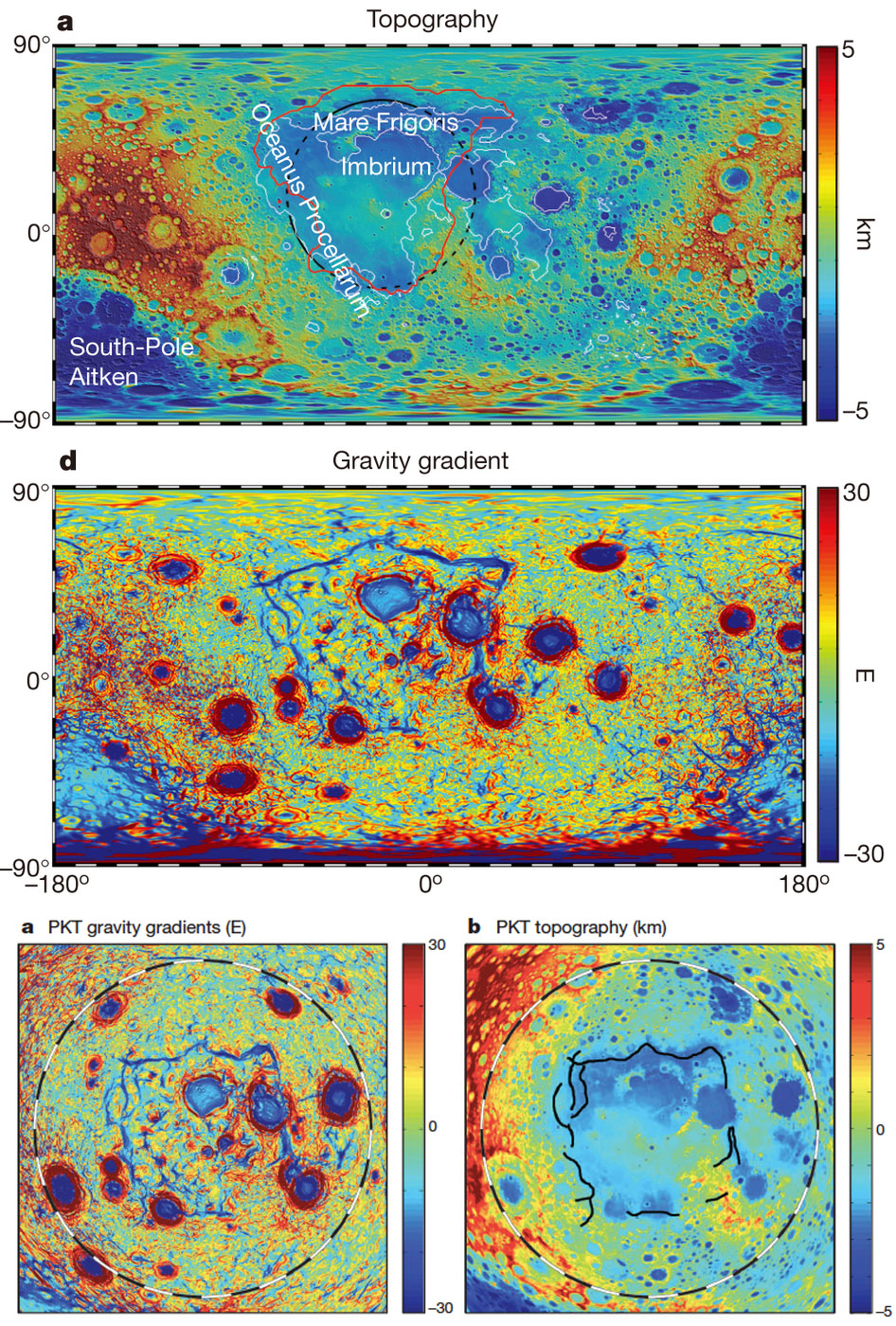October 3, 2014
The Worms Return

maps from Nature Jeff Andrews-Hanna and 13 colleagues
The publication of a new idea to explain the distribution of most maria on the near side was introduced yesterday, with a promise of more analysis today. Here are selected diagrams from the Nature paper. The top image outlines the PKT (red) that contained the heat which probably melted much of the nearside maria (white), and the putative Procellarum Basin (black) claimed to underly the maria. GRAIL gravity data identified roughly linear gravity highs (Blue Worms) along the boundaries of the PKT that the Nature authors propose to be magma-filled rift valleys and the dikes that fed them; there was no need for a Procellarum Basin.
There are many other Blue Worms that this interpretation can not explain, for example, the long blue anomaly at 75°N, visible on both the right and left edges of the Gravity Gradient map (d). More strong worms are circumferential and radial to the South Pole-Aitken Basin (where a much smaller amount of PKT type elements occur), and a blue strand links the Humboldtianum and Moscoviense basins. All of the Blue Worms are undoubtedly dikes, but they didn't form because of the PKT. In fact, all of the smaller impact basins with strong gravity signals (a red low mass/density ring surrounding a blue central mascon) have the most intense blue ring of anomalies right at the edge of the basin interior, just as the putative Procellarum Basin does, and the SPA. Is it possible that deep fractures circle all impact basins, allowing massive dikes to reach the surface to release the oldest basin lavas? Finally, it isn't clear how it relates to the Procellarum Basin or the quasi-rectangular worms, but the bottom two diagrams centered on the PKT show a reference circle of angular diameter of 180° of surface arc that beautifully bounds negative gravity anomalies (red) and elevated topography (also red) to the west. This boundary can be traced at least 180° - comparable to the Caucasus to Carpathian arc of Imbrium. Is this the remnant of an even larger, ancient basin, that the PKT and the quasi-rectangular worms are centered within? This would explain the pervasive decrease in elevation from the western far side toward the maria region of the nearside.
Chuck Wood
Yesterday's LPOD: Ring of Fire
Tomorrow's LPOD: Rover Trip



